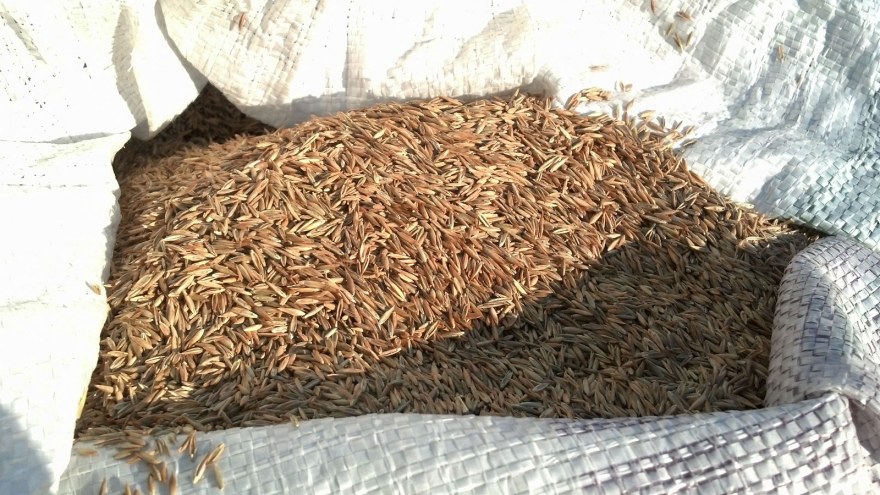Dormant Seeding Lawns
Dormant Seeding
Omaha Organics Lawn Care is now scheduling dormant seeding. Dormant seeding is the 2nd best time of the year for establishing cool-season grasses. Seeding can be done any time after soil temperatures are 40F in order to guarantee no germination until next spring. Seeding between Thanksgiving and St. Patricks’ Day is a good rule of thumb. Timing, soil preparation, species and seeding rate are all very important for dormant seeding. If you are interested in doing this yourself we have seed while supplies last and instructions below.
Dormant Seeding Preparation:
Though simply broadcasting the seed and allowing it to work into the soil naturally through frost-heaving can be effective, it is better to improve seed-soil contact with aerification, powerraking, tilling, power-overseeding, or some other form of cultivation. Wet or frozen soils will likely determine which cultivation is best for each situation, but maximizing seed-soil contact is essential for successful dormant-seeding. Kentucky bluegrass or tall fescue work best, but avoid perennial ryegrass since it may germinate in a mid-winter warm-up only to die in ensuing cold temperatures. Buffalograss can also be dormant seeded.
Dormant Seed Rate
The typical recommendation is to seed at 10-25% higher rates than normal to account for seed loss via erosion, animal feeding, etc. Seed Kentucky bluegrass at 3.0 lbs. /1000 sq. ft., tall fescue at 10 lbs. /1000 sq. ft., and buffalograss at 3.5 lbs. /1000 sq. ft. on bare soils. These rates can be cut by as much as one half if overseeding into existing stands with thin turf. Covering the seed is likely not required, but may reduce potential erosion or seed movement. Erosion blankets, sod, compost or Penn-Mulch should be used on highly erodible areas or where you want the best sucsess.
Watering
Dormant-seeded areas will need irrigation just like any new seeding, once the seed germinates in the spring. Irrigate as often as needed to maintain moisture in the top ¼” of soil. This mean irrigating once or twice per day. Irrigate less regularly and in larger volumes as the seedlings establish. However, dormant-seeded areas may need irrigation all summer as these relatively young plants will not be mature enough to withstand drought stress.
Mowing
Once your seed is established it will need mowed. Early mowing on any newly-seeded area encourages lateral spread and quick fill-in. Mow as soon as the first few leaves of the seedlings reach the mowing height and mow regularly thereafter to maximize fill-in.
Dormant Seeding Information courtesy from the University of Nebraska-Lincoln, Turfgrass Science Team turf.unl.edu and Omaha Organics staff.


